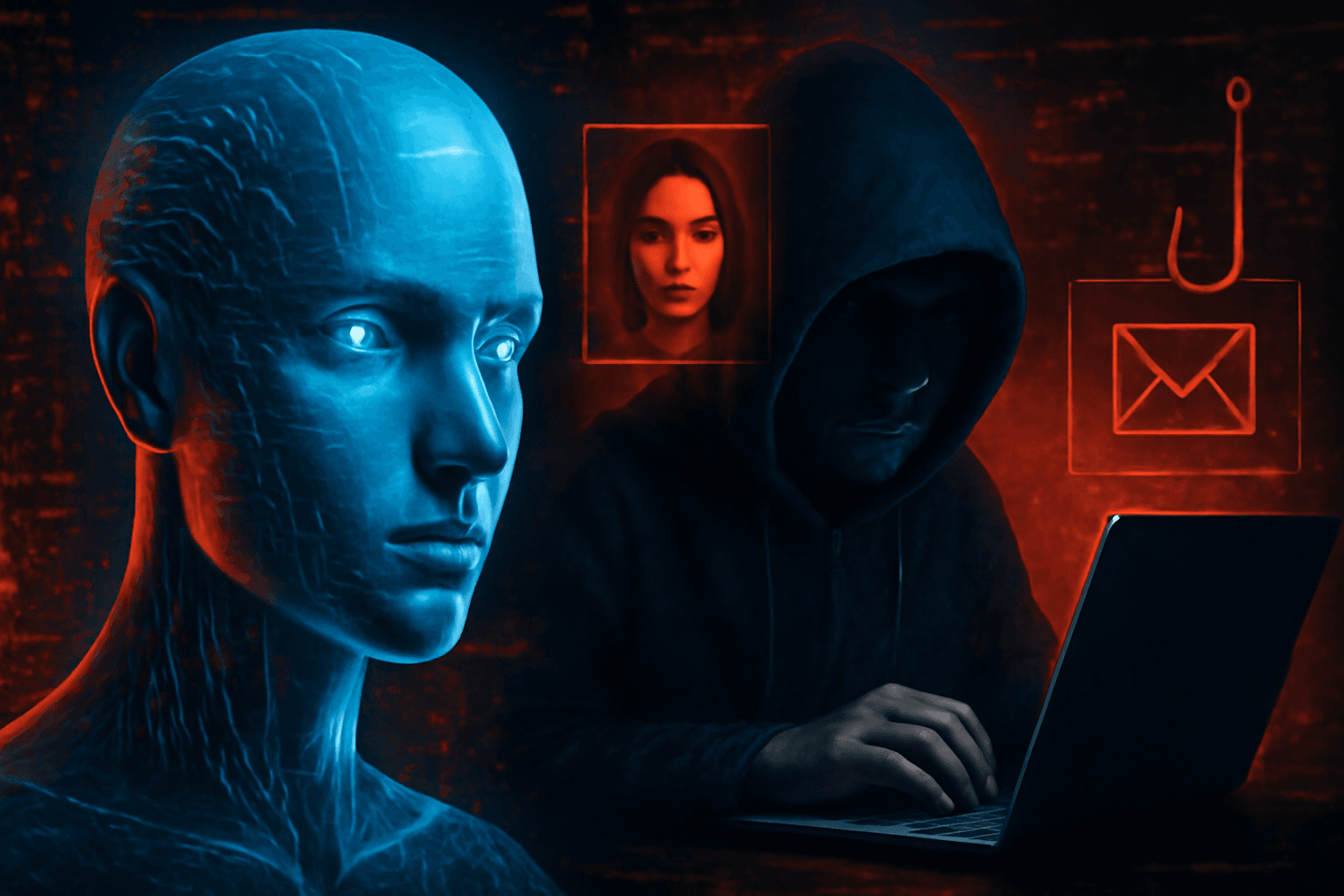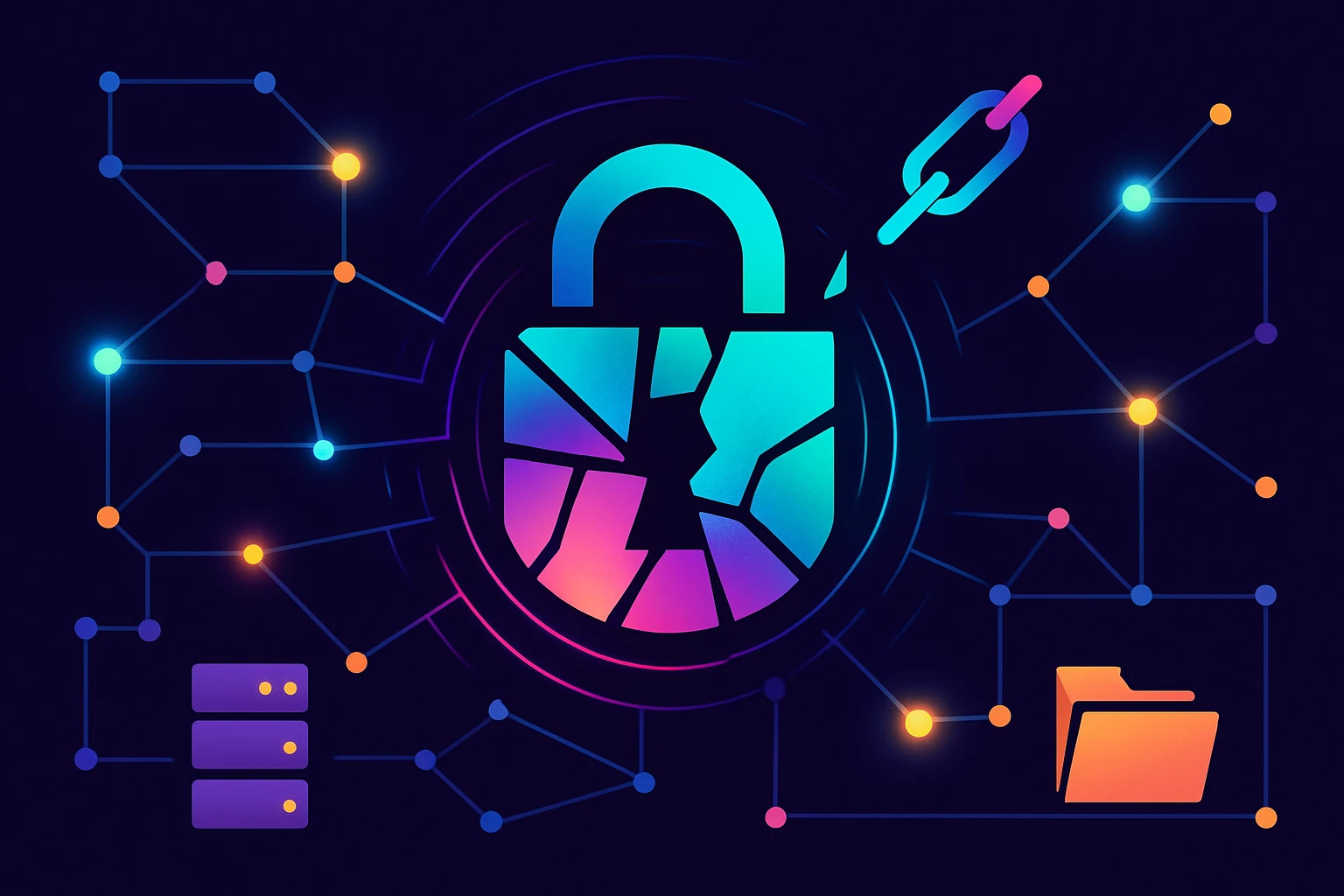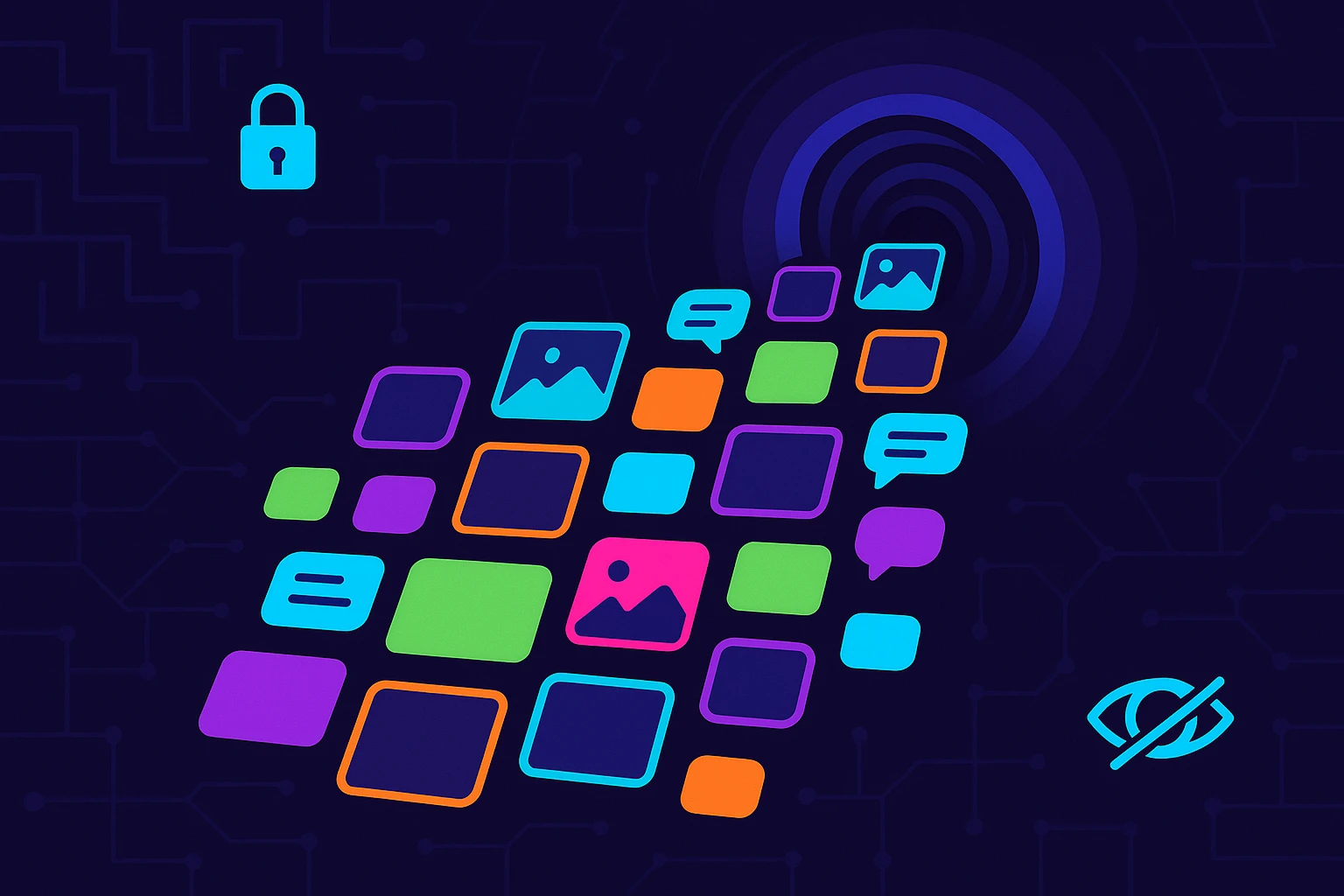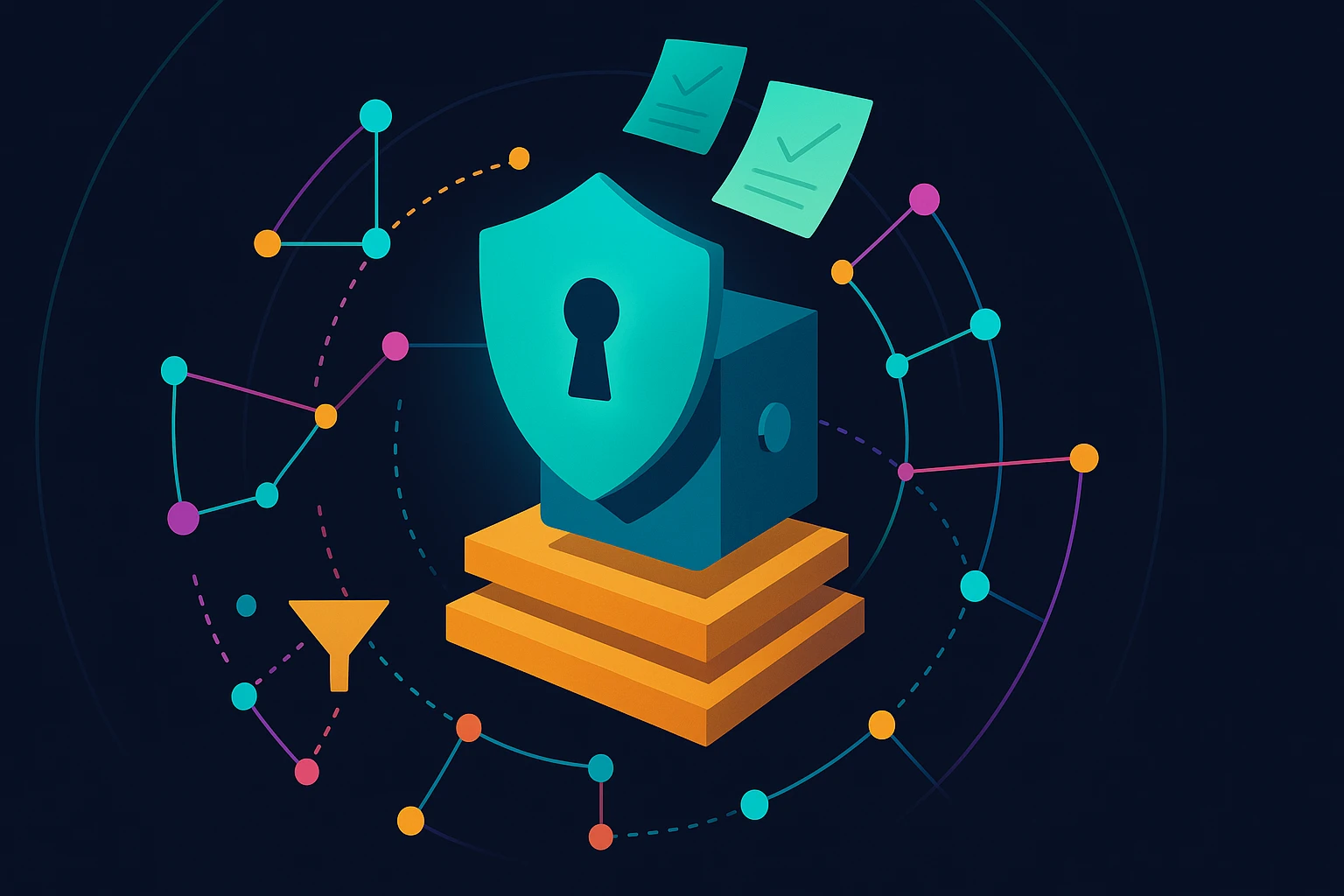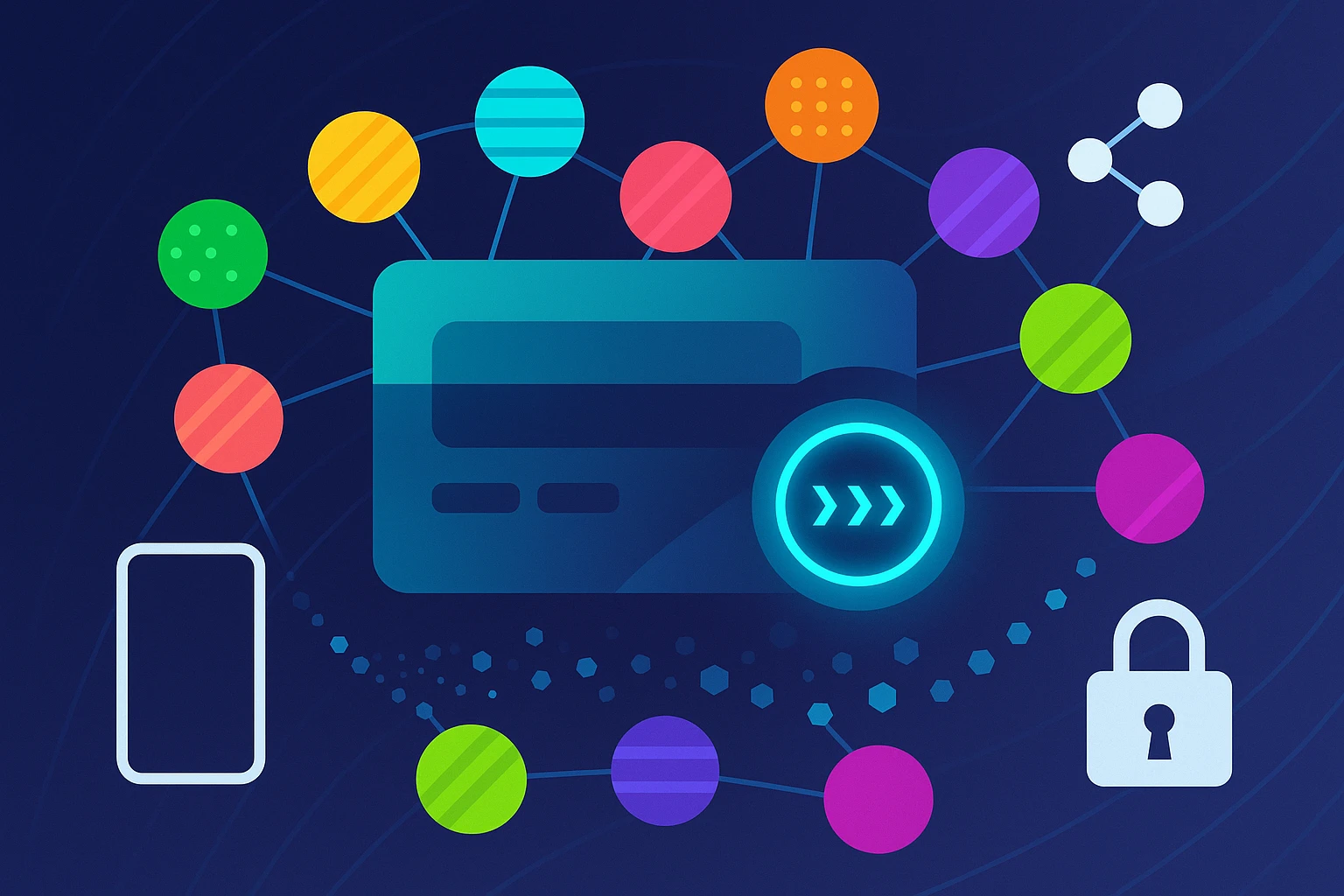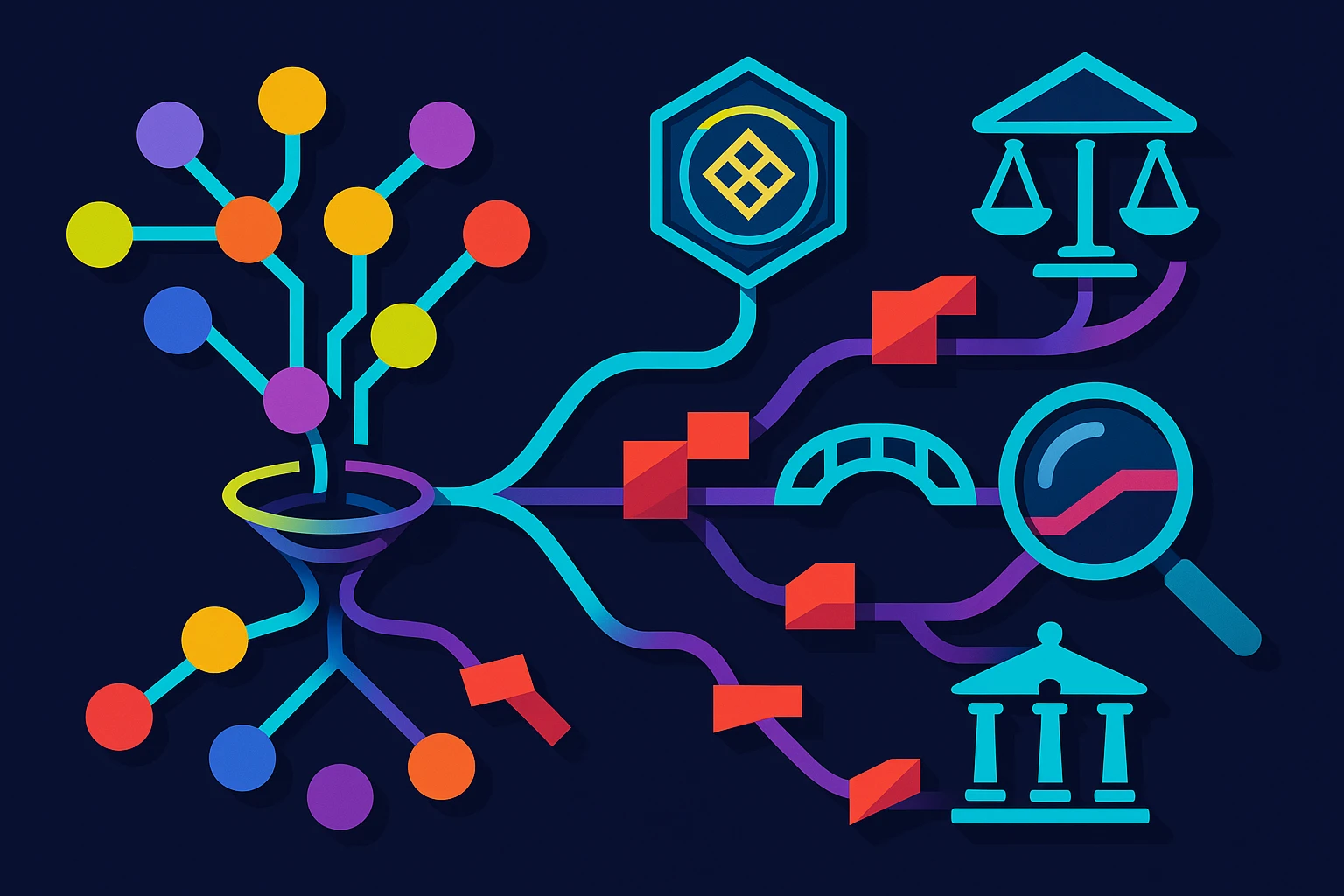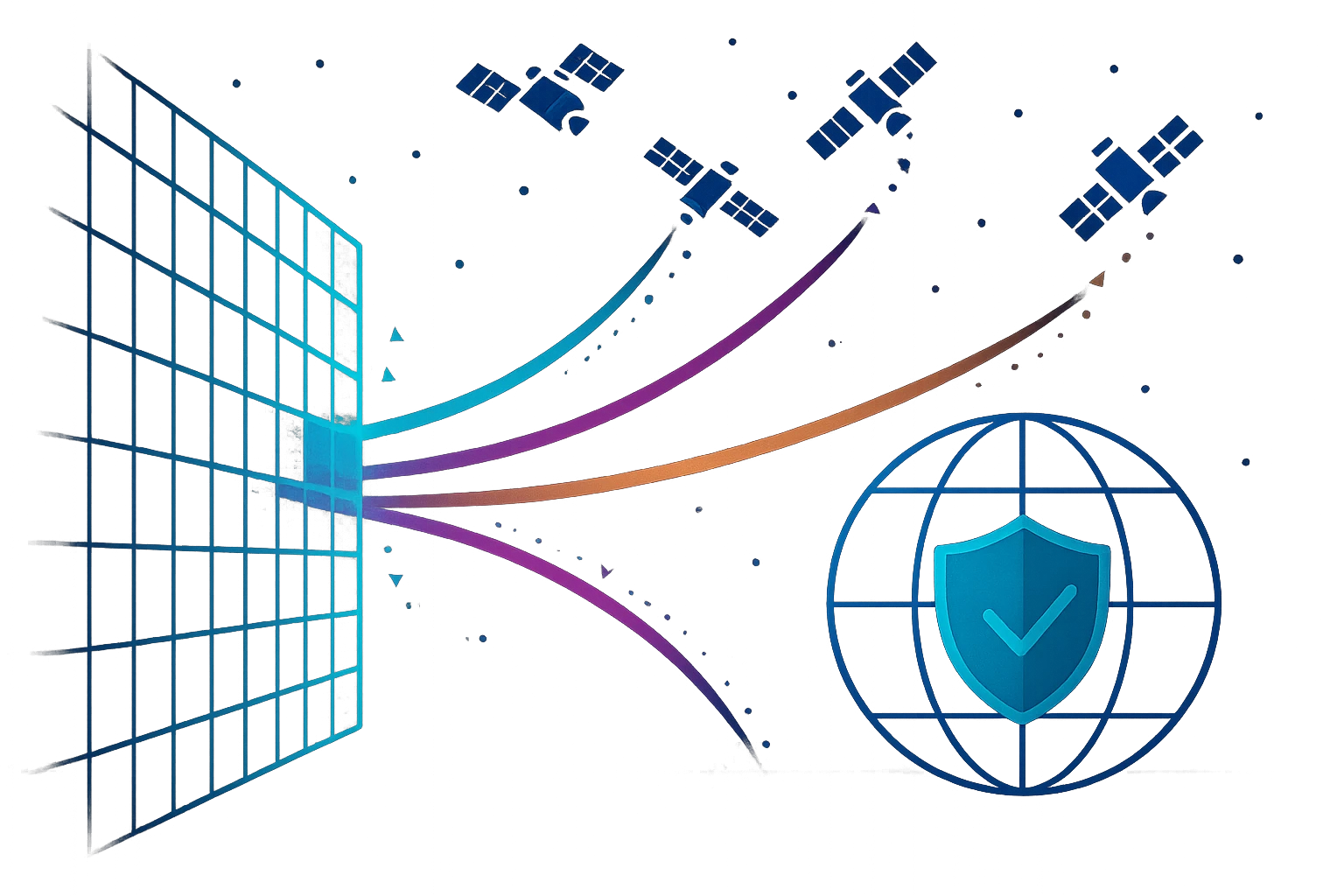Last Updated on May 14, 2025 by DarkNet
Introduction: AI and the New Wave of Cybercrime on the Dark Web
In 2025, artificial intelligence (AI) has evolved from a promising frontier of technology into a powerful tool for cybercriminals operating on the dark web. The same capabilities that enable AI to revolutionize legitimate businesses—such as automated decision-making, realistic content generation, and sophisticated predictive analytics—are now exploited to orchestrate unprecedented forms of cyberattacks. Chief among these threats are deepfake fraud, where convincingly fabricated video and audio are used to deceive and defraud individuals and organizations, and auto-phishing, which leverages intelligent automation to personalize phishing attacks at a massive scale.
As these technologies become more advanced, traditional cybersecurity defenses face growing challenges. Criminal actors no longer require extensive technical expertise; AI-powered tools now widely available on dark web marketplaces empower even novice attackers to execute sophisticated cybercrimes with alarming ease and precision. Consequently, organizations, individuals, and governments alike face increasing risks of financial loss, identity theft, reputational damage, and compromised infrastructure.
Understanding and responding to this evolving landscape is not merely an option but a critical necessity. Recognizing the significance of AI-driven threats, comprehending their mechanisms, and adopting proactive countermeasures will be essential to safeguarding digital assets and maintaining security in an increasingly AI-dominated cybercrime environment. This article explores the extent of AI exploitation by criminals, identifies emerging trends, and outlines practical strategies for staying secure in the face of these unprecedented threats.
Deepfake Fraud: AI-Powered Identity Theft
Deepfake fraud refers to the malicious use of artificially generated or manipulated digital content—typically video or audio—to impersonate real individuals convincingly. Powered by sophisticated machine learning algorithms, particularly generative adversarial networks (GANs), deepfakes enable cybercriminals to create strikingly realistic likenesses of targeted individuals. Unlike conventional identity theft, deepfake fraud goes beyond mere stolen credentials or forged documents, as it vividly imitates a victim’s physical appearance, voice, and behavior, making deception significantly more convincing and harder to detect.
Cybercriminals leverage deepfake technology primarily for financial scams, social engineering attacks, and reputational sabotage. By creating credible impersonations of executives, government officials, or celebrities, attackers can deceive victims into transferring large sums of money, sharing sensitive information, or unknowingly participating in fraudulent activities.
Throughout 2025, several high-profile incidents have highlighted the gravity of deepfake fraud. In one notable case, cybercriminals used a deepfake video impersonating the CFO of a multinational corporation to successfully authorize the fraudulent transfer of $3.5 million to offshore accounts. The targeted company’s employees, thoroughly convinced by the authenticity of the AI-generated video conference, processed the payment without suspicion. The fraud was only discovered days later, long after the attackers had laundered the funds.
Another incident involved a political scandal wherein a deepfake audio clip, meticulously replicating the voice of a prominent U.S. senator, was disseminated across social media, causing widespread misinformation and reputational damage. Despite prompt denial and investigation, the realistic nature of the fraudulent audio triggered significant political fallout and public distrust.
These examples illustrate how AI-powered deepfakes have fundamentally transformed the landscape of cybercrime, raising the stakes for individuals and organizations alike. Combating this sophisticated threat demands not only technological advancements in deepfake detection but also increased awareness and proactive defensive strategies among businesses, governments, and the general public.
Auto-Phishing: AI-Driven Social Engineering
Auto-phishing refers to a highly automated form of social engineering attacks powered by advanced artificial intelligence. Unlike traditional phishing—which typically relies on generalized, manually crafted messages sent to numerous recipients—auto-phishing leverages AI-driven algorithms to generate highly personalized, context-aware emails and messages at scale. By analyzing vast amounts of publicly available data, social media profiles, corporate databases, and previously compromised credentials, AI-powered systems can produce convincing, individualized phishing attempts tailored precisely to the targeted victim.
AI technologies fueling auto-phishing include natural language processing (NLP), deep learning algorithms, and behavioral analytics. NLP enables attackers to craft realistic and grammatically impeccable messages closely matching an individual’s communication style. Deep learning algorithms can analyze patterns in user interactions and responses, enabling the phishing system to optimize messaging for maximum impact. Behavioral analytics provide additional intelligence, allowing cybercriminals to identify the most susceptible targets based on online habits, preferences, or emotional triggers.
In 2025, auto-phishing emerged as a leading cybersecurity concern due to several notable incidents. In one prominent case, a multinational technology corporation suffered a significant data breach after an AI-driven auto-phishing campaign targeted hundreds of employees with personalized messages mimicking internal communications. The AI system utilized employee profiles from LinkedIn, internal newsletters, and even leaked company emails to construct messages so convincing that more than 60 employees unwittingly provided login credentials, leading to extensive data loss and financial damages exceeding $10 million.
Another example occurred in the financial sector, where a sophisticated auto-phishing campaign targeted customers of a major U.S. bank. Utilizing detailed personal and transaction histories acquired from previous breaches, the AI-driven phishing system sent tailored emails and SMS messages, prompting thousands of recipients to urgently verify suspicious transactions. Believing the personalized communications authentic, hundreds of customers inadvertently surrendered sensitive banking information, resulting in substantial financial losses and widespread customer anxiety.
These incidents underscore the severe risk posed by auto-phishing, illustrating that traditional detection methods and general awareness are insufficient defenses against such highly personalized AI-enabled threats. Consequently, organizations and individuals must adopt advanced cybersecurity measures, continuous employee education, and AI-driven threat detection tools specifically designed to recognize and counteract sophisticated auto-phishing attacks.
Other Emerging AI Threats on the Dark Web in 2025
Beyond deepfake fraud and auto-phishing, artificial intelligence has significantly broadened the capabilities and sophistication of cybercriminal activities across various domains. In 2025, criminals on the dark web increasingly utilize AI-driven tools and methods, particularly in automating malware creation, targeting IoT devices and critical infrastructure, and enhancing evasion capabilities against cybersecurity defenses.
Automating Malware Creation with AI
Cybercriminals have begun to deploy advanced AI algorithms to automate and optimize the development of malicious software. Traditionally, malware creation required technical expertise, lengthy development cycles, and manual refinement. However, AI-driven malware platforms—available as services on dark web marketplaces—now enable even non-technical actors to rapidly generate customized malware strains with minimal effort. Machine learning models streamline the adaptation of malware, automatically modifying code structures to bypass known security measures and significantly increasing their efficacy.
In early 2025, an AI-enhanced ransomware strain named “ShadowMorph” emerged, capable of autonomously adapting its encryption methods based on targeted organizations’ defenses. ShadowMorph successfully attacked multiple healthcare providers, encrypting sensitive patient data and extorting substantial ransom payments. The ability of this malware to continually evolve through machine learning techniques made traditional antivirus solutions nearly ineffective.
AI-Enabled Attacks on IoT Devices and Critical Infrastructure
Internet of Things (IoT) devices and critical infrastructure have become prime targets for AI-powered cyberattacks due to their often-inadequate security protocols and pervasive connectivity. Cybercriminals leverage AI algorithms to efficiently scan, identify vulnerabilities, and coordinate large-scale attacks on connected devices and infrastructure systems, significantly increasing potential damage and disruption.
One notable incident involved a coordinated attack against municipal utilities in Europe, orchestrated using AI-driven botnets. The AI system identified vulnerabilities in thousands of IoT-connected sensors controlling water and power distribution, enabling attackers to trigger significant outages affecting millions. This incident demonstrated how effectively AI could scale attacks, amplifying both their complexity and impact.
AI-Enhanced Evasion and Threat Detection Avoidance
Perhaps the most concerning trend is the deployment of AI for advanced evasion techniques. Cybercriminals increasingly employ AI-driven tools to anticipate, deceive, and bypass cybersecurity defenses. AI systems continuously analyze security platforms, learning their detection methods and adapting malware behavior to remain undetected for longer periods.
In mid-2025, cybersecurity experts identified the widespread use of a sophisticated AI toolkit dubbed “GhostNet,” capable of autonomously adjusting malware signatures and network traffic patterns to evade security protocols. GhostNet-equipped malware successfully infiltrated multiple financial institutions worldwide, operating undetected for months and enabling substantial data exfiltration before detection.
These emerging AI threats demonstrate that cybercriminals’ capabilities have profoundly evolved. Organizations must urgently adapt their cybersecurity strategies to counteract these new threats by investing in advanced, AI-based defense systems, prioritizing robust IoT security frameworks, and continuously enhancing their threat intelligence capabilities. The stakes have never been higher, and proactive defense has never been more essential.
Trends and Statistics: The Scope of AI-Enhanced Dark Web Threats
In 2025, the dark web has evolved into a sophisticated ecosystem where artificial intelligence (AI) significantly amplifies the scale, speed, and complexity of cyber threats. This transformation has led to a surge in AI-driven cybercrime, posing substantial risks to various sectors and individuals.
Surge in AI-Driven Cybercrime
Recent analyses indicate a dramatic increase in the utilization of AI by cybercriminals:
- Malicious AI Tools: Mentions of malicious AI tools on dark web forums have spiked by 219% in the past year, reflecting a growing interest among threat actors in leveraging AI for cyberattacks . (Dark Web Mentions of Malicious AI Tools Spike 200%)
- AI-Generated Phishing: AI-generated phishing emails have demonstrated a 54% click-through rate, significantly higher than the 12% rate for human-crafted emails, indicating enhanced effectiveness in deceiving victims . (AI agents feeding the dark web require new security tactics | SC Media)
- Phishing Kits: Pre-packaged phishing kits, some priced as low as $25, are readily available on the dark web, enabling even unskilled individuals to launch sophisticated phishing attacks . ($25 software kits to steal your personal details are freely on sale on dark web – here’s how to remain safe)
Vulnerable Sectors
Certain industries are disproportionately targeted by AI-enhanced cyber threats:
- Financial Services: Banks and financial institutions face heightened risks, with 80% of bank cybersecurity executives expressing concerns about keeping pace with AI-powered cybercriminals . (Wall Street is worried it can’t keep up with AI-powered cybercriminals)
- Healthcare: Healthcare systems are increasingly targeted by AI-driven ransomware attacks, threatening patient data and critical operations . (What Are the Top Cybersecurity Threats of 2025? | CSA)
- Critical Infrastructure: Industrial control systems and operational technology environments are vulnerable to AI-powered attacks that can disrupt essential services . (Darktrace 2025 Report: AI threats surge, but cyber resilience grows …)
Typical Victim Profiles
AI-enhanced cyber threats often exploit specific victim profiles:
- Individuals: Personal data, such as Social Security numbers and dates of birth, are sold for as little as $7 on the dark web, facilitating identity theft and financial fraud . (Dark web scammers use AI to amplify identity theft; BBB report warns)
- Small and Medium Businesses (SMBs): SMBs are targeted due to often having less robust cybersecurity measures, making them susceptible to data breaches and ransomware attacks .
- Government Entities: State-sponsored actors employ AI to conduct espionage and disrupt governmental operations, posing national security risks .
Conclusion
The integration of AI into cybercriminal activities on the dark web has escalated the threat landscape in 2025. With the proliferation of AI tools and services, cyberattacks have become more accessible and effective, endangering various sectors and individuals. Addressing these challenges requires a concerted effort to enhance cybersecurity measures, promote awareness, and develop AI-driven defense mechanisms to counteract the evolving threats.
Countermeasures and Security Strategies
As AI-driven cyber threats such as deepfake fraud and auto-phishing become increasingly prevalent in 2025, businesses and individuals must adopt proactive, innovative, and comprehensive security measures to mitigate these risks effectively. Here are practical strategies and tools to help organizations and individuals strengthen their cybersecurity posture:
Strategies for Businesses
- AI-Based Threat Detection and Response:
Deploy advanced AI-driven cybersecurity platforms capable of detecting anomalies, deepfake content, and automated phishing attempts in real-time. Solutions like behavioral analytics and anomaly detection software enable swift identification and containment of threats before significant damage occurs. - Zero Trust Security Model:
Implement a zero trust framework, which assumes all users and devices—inside or outside the network—are potential threats. Strict identity verification, continuous monitoring, and minimal privilege access significantly reduce risks posed by deepfake impersonations and credential compromise. - Regular Employee Training and Awareness Programs:
Continuously educate employees on recognizing signs of deepfake fraud and auto-phishing. Interactive simulations, updated regularly to reflect the latest AI-driven attack methodologies, can effectively enhance employee resilience against these threats. - Secure Communication Protocols:
Establish clear policies requiring multi-factor authentication (MFA), identity verification, and secure channels for financial transactions and sensitive communications. This practice helps protect organizations from financial scams resulting from deepfake-generated impersonations.
Tools and Practices for Individuals
- Digital Identity Verification Tools:
Utilize advanced verification services and apps that leverage AI technology to detect deepfake content, verifying digital interactions through biometric and behavioral authentication methods. - Enhanced Email Filtering and Authentication:
Adopt email filtering services enhanced by machine learning to identify and quarantine sophisticated auto-phishing attempts before they reach users. Enabling protocols such as DMARC (Domain-based Message Authentication, Reporting, and Conformance) further protects against phishing emails. - Personal Cybersecurity Hygiene:
Maintain good cybersecurity habits, including frequent password changes, use of strong and unique passwords, activating MFA across accounts, and regularly updating all devices and software to protect against exploitation through known vulnerabilities.
Public-Private Sector Cooperation
Effective protection against AI-enhanced cyber threats requires robust collaboration between the public and private sectors:
- Information Sharing and Joint Threat Intelligence:
Encourage open channels of communication between businesses, cybersecurity firms, and government agencies. Sharing threat intelligence in real-time helps anticipate and quickly respond to evolving threats. - Collaborative Regulatory Frameworks:
Support initiatives aimed at developing regulatory standards for AI usage, especially regarding accountability, transparency, and ethical deployment of AI technologies. These regulations can mitigate misuse of AI technologies by malicious actors. - Joint Cybersecurity Exercises and Simulations:
Regularly conduct combined cybersecurity exercises involving government entities, private sector stakeholders, and cybersecurity specialists to test and refine collective responses to simulated AI-driven attacks, enhancing overall preparedness.
By integrating advanced technological solutions, continuous education, stringent security protocols, and fostering cooperation between public and private sectors, organizations and individuals can effectively mitigate the growing threats posed by AI-enhanced cybercrime.
Expert Insights and Future Predictions
As AI-enhanced cyber threats continue to evolve rapidly, cybersecurity experts anticipate that the next several years will see unprecedented challenges and transformations in how threats manifest on the dark web. Insights from leading experts highlight critical developments and underline the potential impacts of emerging technologies like quantum computing, blockchain, and increasingly sophisticated AI models.
The Evolution of AI Threats Through 2030
Cybersecurity specialists predict that AI-driven threats will grow significantly more advanced and adaptive by 2030. According to analysts, cybercriminals will increasingly leverage fully autonomous AI agents capable of independent decision-making and self-learning. These agents could autonomously identify and exploit vulnerabilities without human intervention, dramatically escalating both the scale and speed of cyberattacks.
Experts warn that deepfake technology will likely reach unprecedented realism, making detection even more challenging. Advanced generative models could soon create deepfake identities indistinguishable from real people in live interactions, significantly complicating identity verification and trust mechanisms in both digital and physical interactions.
Quantum Computing and the Risk to Cryptography
The advent of quantum computing, expected to mature significantly within the next five years, could fundamentally disrupt current cybersecurity models. Experts caution that quantum computing may enable cybercriminals to crack existing cryptographic systems rapidly, exposing vast amounts of currently secure data. Organizations must, therefore, transition to quantum-resistant cryptographic standards to prevent catastrophic breaches. Preparations for this shift are underway, yet experts stress the urgency of proactively developing and deploying quantum-safe encryption methods.
Blockchain’s Dual Potential
Blockchain technology presents both challenges and opportunities in the cybersecurity landscape. On one hand, cybercriminals might exploit blockchain’s anonymity and decentralized nature to conduct untraceable financial transactions, intensify ransomware attacks, and facilitate dark web marketplace operations. Conversely, blockchain could significantly bolster cybersecurity defenses by providing immutable, transparent logs and traceable digital identities, greatly improving threat detection and incident response capabilities.
Advanced AI Models and Enhanced Defenses
The rapid progression of advanced AI models, including large-scale generative AI systems and powerful predictive analytics, presents a dual-edged sword. Cybercriminals could utilize increasingly accessible AI models to automate sophisticated cyberattacks, enhancing their speed, precision, and efficacy. However, security experts also highlight the defensive potential of these same advanced AI models, emphasizing that organizations equipped with robust AI-driven defense mechanisms will better anticipate, detect, and neutralize evolving threats.
Plausible Future Scenarios
Experts envision several plausible scenarios for the cyber threat landscape through 2030:
- AI Arms Race: An escalating arms race between cybercriminals and cybersecurity providers, both employing progressively sophisticated AI systems, resulting in a highly dynamic threat environment demanding constant innovation.
- Quantum Cybersecurity Crisis: A sudden, widespread cybersecurity crisis triggered by quantum computers breaking existing encryption standards, prompting rapid global shifts toward quantum-safe cryptographic technologies.
- Blockchain Regulation and Enforcement: Enhanced international regulatory frameworks emerge, enabling effective monitoring and traceability of blockchain-based transactions, significantly reducing anonymity-driven cybercrime.
- Widespread Adoption of Autonomous Cyber Defenses: Organizations universally deploy autonomous AI cybersecurity systems, drastically reducing response times and effectively neutralizing threats before substantial damage can occur.
Staying Ahead of Emerging Threats
The coming years will undoubtedly witness profound shifts in cyber threat dynamics, propelled by rapid advancements in AI, quantum computing, and blockchain technologies. Businesses, individuals, and governments must proactively anticipate these developments, continuously investing in robust cybersecurity frameworks and agile response capabilities. By closely following expert insights, embracing innovative defensive technologies, and maintaining preparedness for evolving threats, stakeholders can effectively navigate the challenging cybersecurity landscape through 2030 and beyond.
Conclusion: Preparing for the Future of AI Threats
The rise of artificial intelligence on the dark web represents a critical turning point in the landscape of cyber threats. From sophisticated deepfake fraud and automated phishing to AI-enhanced malware targeting critical infrastructure, cybercriminals are increasingly harnessing AI to amplify their capabilities and evade traditional defenses. As these technologies continue to evolve rapidly—fueled by advances such as quantum computing, blockchain, and advanced generative AI models—the cybersecurity risks faced by businesses, governments, and individuals will grow significantly more complex and challenging.
Constant vigilance and proactive cybersecurity measures are no longer optional—they are imperative. Organizations must adopt advanced AI-driven security tools, implement rigorous identity verification practices, and continuously educate their workforce to recognize and respond to emerging threats. Governments should facilitate robust public-private partnerships, encourage innovation in cybersecurity, and swiftly adapt regulatory frameworks to the realities of AI-driven cybercrime. Individuals must cultivate strong cybersecurity habits, remain aware of potential threats, and actively protect their digital identities.
To effectively counter the threats of tomorrow, action must begin today. The urgency of the situation calls for immediate investment in advanced defenses, proactive preparedness, and enhanced cooperation at all levels. By collectively prioritizing cybersecurity vigilance and embracing continuous innovation, we can secure our digital future against the ever-evolving threats posed by AI on the dark web.
- LockBit after Operation Cronos: what it means for you in 2025 – short and to the point - October 4, 2025
- Kagi: Finally, a Search Engine That Doesn’t Sell Your Soul (or Data) - October 3, 2025
- Nanochan: The Imageboard That Lives in the Shadows - October 1, 2025

